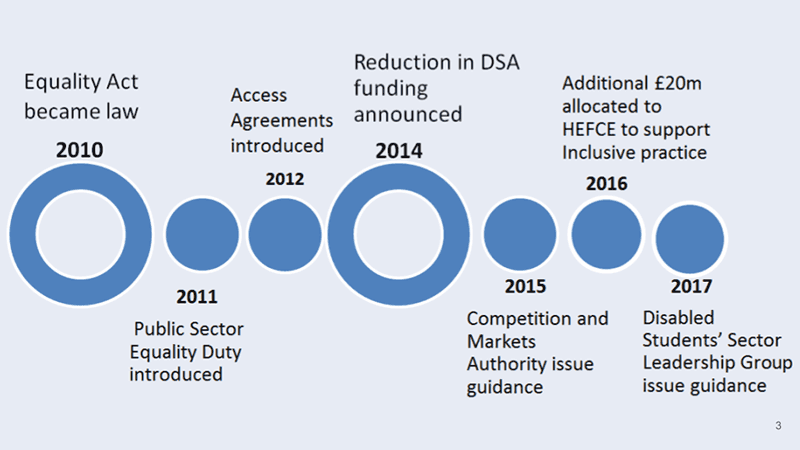Changes in government policy and legislation in recent years have led to an increased need for universities to be more inclusive (see diagram).
Whilst some individual needs are met by Disabled Students’ Allowances (DSA), the recent reforms to allocate funding to a smaller number of students with the most complex needs, has emphasised individual university responsibility for providing the majority of reasonable adjustments for disabled students.
It has been made clear that the expectation is for universities to become more inclusive, therefore making anticipatory reasonable adjustments for disabled students in order to comply with the Equality Act (2010). The adoption of inclusive practice around the university will also contribute to:
- meeting the targets set out in our Access Agreement as part of widening participation
- compliance with the Competition and Markets Authority
- the Teaching Excellence Framework
- cost savings
- reputational advantages.

The resources included on this website, are intended to help achieve our aims to be an inclusive university. By using approaches which are recommended for students with SpLD, improvements can be made to the student experience for all students, in line with Universal Design for Learning theory and practice (Rose and Meyer 2008).
Use of the resources will result in students having access to clearly structured written and online materials, which conform to certain style requirements, prior to lectures and other teaching sessions. The recommendations are not designed to be overly prescriptive, to afford the flexibility to continue to innovate. Hence, for example, if PowerPoint slides are not used, an outline structure of the lecture as a handout is an acceptable alternative. Electronic materials, provided in forms which enable students to amend the formatting, colour and text size, ensure that students are able to adapt materials to suit their learning needs.
